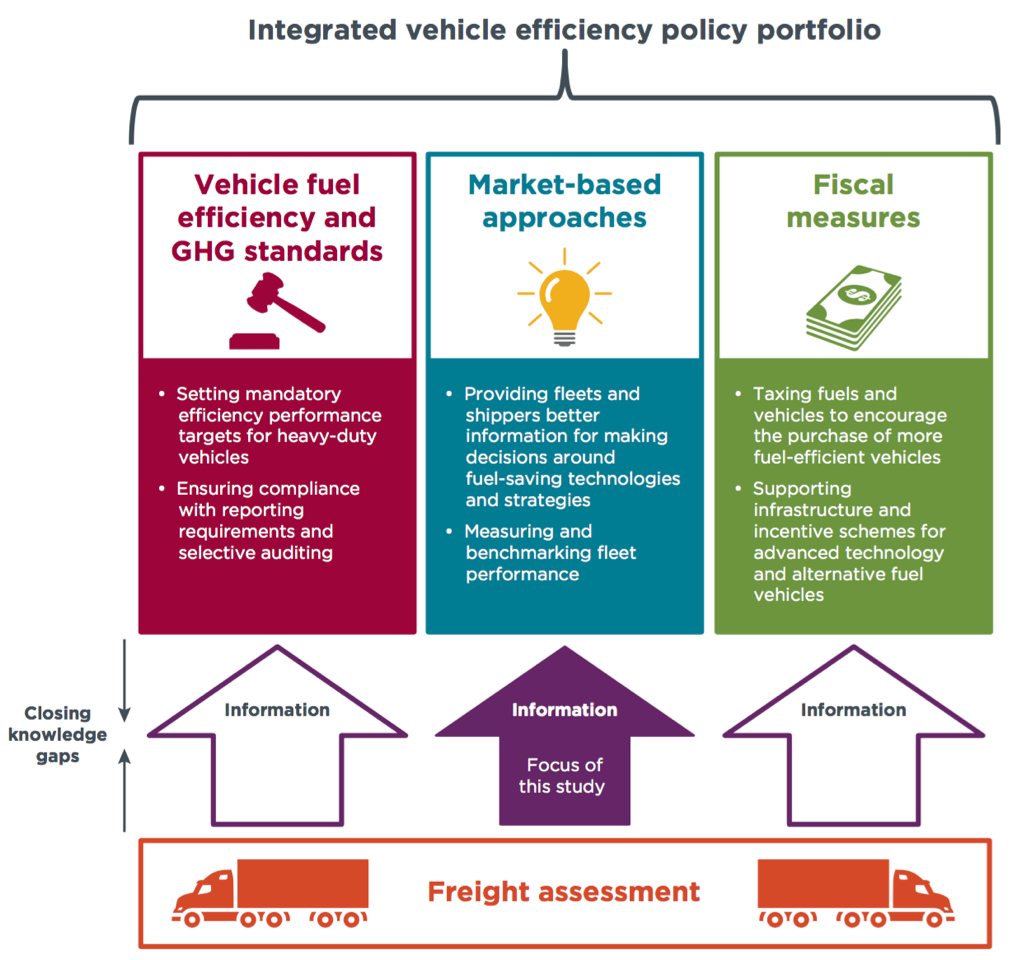White paper
Freight assessment blueprint: Practical guide for evaluating freight transportation in support of national green freight programs
This document aims to provide step-by-step guidance for conducting a freight assessment when the ultimate goal is to develop a green freight program. As more countries and regions explore ways to reduce fuel use and emissions from the trucking sector, there has been increased interest in establishing green freight programs, strengthening existing programs, aligning programs to use globally consistent methodologies to quantify emissions benefits, and incorporating multiple pollutants such as black carbon in addition to carbon dioxide. Ideally, voluntary green freight programs are just one part of a broader portfolio of policy measures aimed at improving the environmental performance of the freight sector. The figure below shows the three main areas of policy measures for increasing vehicle efficiency: (a) mandatory fuel efficiency and greenhouse gas (GHG) standards, (b) market-based approaches, and (c) fiscal measures. Green freight programs typically fall into the second category, with a goal of creating better access to financing mechanisms and information about fuel-saving technologies, strategies, and fleet performance so that trucking fleets, shippers, and other stakeholders in the industry can make informed decisions for saving fuel and cutting costs.
The key elements of a freight assessment that are described in detail in this paper include an analysis of the truck, trailer, and trucking equipment sales market; an in-depth investigation of trucking operations; the chronicling of various stakeholder opinions and expectations regarding technologies and strategies for reducing fuel use and emissions from freight trucks; and, finally, laying the foundation for the development (or strengthening) of a green freight program.

